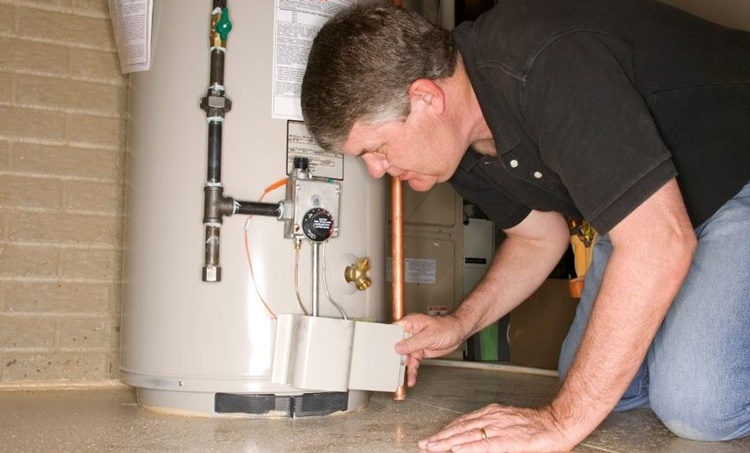Just how do you really feel with regards to Tips on Maintaining a Water Heater?

Hot water is important for day-to-day comfort, whether it's for a rejuvenating shower or cleaning dishes. To ensure your warm water system runs efficiently and lasts much longer, regular maintenance is crucial. This article offers sensible tips and insights on how to preserve your home's warm water system to stay clear of disruptions and expensive fixings.
Intro
Maintaining your home's warm water system could seem difficult, yet with a couple of easy steps, you can guarantee it operates smoothly for many years ahead. This guide covers everything from comprehending your warm water system to do it yourself upkeep suggestions and understanding when to call professional help.
Significance of Preserving Your Hot Water System
Routine upkeep not just extends the lifespan of your hot water system but likewise ensures it operates efficiently. Ignoring upkeep can lead to lowered effectiveness, greater energy costs, and even early failing of the system.
Indicators Your Hot Water System Demands Maintenance
Understanding when your warm water system requires focus can stop significant issues. Look out for signs such as inconsistent water temperature, strange noises from the heating unit, or rustic water.
Flushing the Water Heater
Purging your hot water heater eliminates sediment build-up, boosting efficiency and prolonging its life.
Checking and Changing Anode Rods
Anode poles stop rust inside the container. Evaluating and changing them when worn is important.
Complicated Issues Requiring Specialist Help
Instances consist of major leaks, electric troubles, or if your water heater is regularly underperforming.
Routine Professional Upkeep Perks
Expert upkeep can include thorough examinations, tune-ups, and guaranteeing compliance with safety and security criteria.
Checking and Adjusting Temperature Level Setups
Changing the temperature setups makes sure optimal efficiency and security.
DIY Tips for Upkeep
You can carry out several upkeep jobs on your own to keep your warm water system in top condition.
Looking for Leaks
On a regular basis check pipes and connections for leaks, as these can bring about water damage and higher expenses.
Understanding Your Warm Water System
Before diving right into maintenance jobs, it's valuable to understand the standard components of your warm water system. Generally, this consists of the hot water heater itself, pipes, anode poles, and temperature controls.
Regular Monthly Maintenance Tasks
Routine month-to-month checks can help capture minor concerns prior to they escalate.
Checking Stress Relief Valves
Checking the stress relief valve guarantees it functions properly and protects against excessive stress buildup.
Protecting Pipelines
Protecting warm water pipelines decreases warmth loss and can save power.
When to Call a Specialist
While DIY maintenance is beneficial, some problems need specialist know-how.
Conclusion
Regular upkeep of your home's warm water system is essential for effectiveness, durability, and price savings. By complying with these pointers and knowing when to seek expert assistance, you can make certain a dependable supply of hot water without unanticipated disruptions.
How to Maintain an Instant Hot Water Heater
Before tinkering with your hot water heater, make sure that it’s not powered on. You also have to turn off the main circuit breaker and shut off the main gas line to prevent accidents. Also turn off the water valves connected to your unit to prevent water from flowing into and out of the appliance. 2. When you’re done, you have to detach the purge valves’ caps. These look like the letter “T†and are situated on either side of the water valves. Doing so will release any pressure that has accumulated inside the valves while at the same time avoid hot water from shooting out and burning your skin. 3. When the purge valves’ caps are removed, you have to connect your hosing lines to the valves. Your unit should have come with three hoses but if it didn’t, you can purchase these things from any hardware or home repair shops. You can also get them from retail stores that sell water heating systems. Read the user’s manual and follow it to complete this task properly. When the hosing lines are connected, open the purge port’s valves. 4. You should never use harsh chemical cleaners or solutions when cleaning your unit. Make use of white vinegar instead. It should be undiluted and you’ll probably use about 2 gallons. 5. Now flush your water heater. This task should probably take about 40 minutes. We can’t give you specific directions for this because the procedure is carried out depending on the type, model and brand of your heater. With that being said, refer to the user’s manual. 6. When you’re done draining the unit, you have to turn off the purge port valves again. Remove the hosing lines that you earlier installed on each of the water valves. Put the valve caps (purge port) back in their respective places and be very careful so as not to damage the rubber discs that are found inside these caps. 7. Now that everything’s back in place, check your user’s manual again to find out how to reactivate your water heating system. 8. Once it is working, turn one of your hot water faucets on just to let air pass through the heater’s water supply pipes. Leave the tap on until water flows smoothly out of it. https://www.orrplumbing.com/blog/2014/september/how-to-maintain-an-instant-hot-water-heater/

As a passionate person who reads about Tips on Maintaining a Water Heater, I was thinking sharing that information was a great idea. If you appreciated our post if you please do not forget to pass it around. Bless you for your time. Come back soon.
Schedule Here